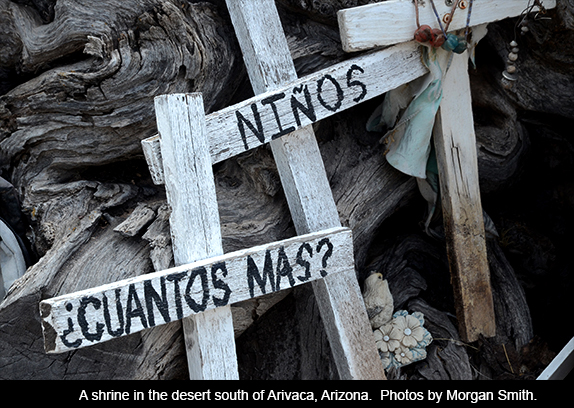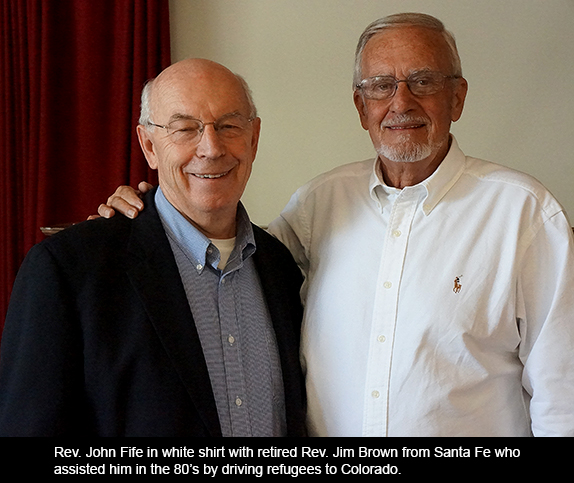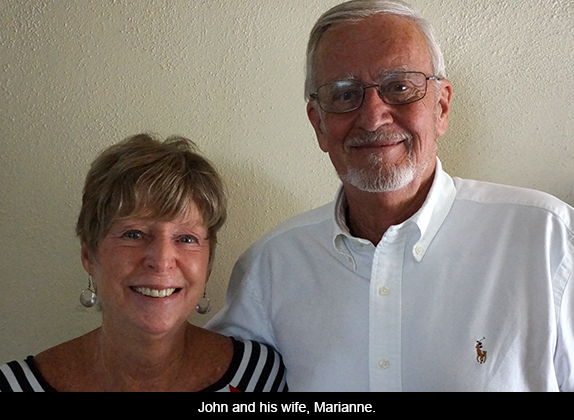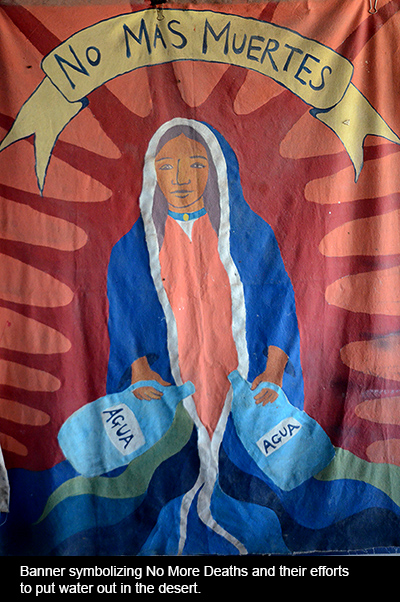
With the defeat of Eric Cantor, immigration reform may be dead for the near future. Nonetheless, there are heroes out there who won’t be deterred by Congressional dysfunction. One of them is Reverend John Fife who was recently in Santa Fe.
Back in the early 1980s when wars were raging in Central America, refugees fled to the United States from death squads in their home countries, particularly Guatemala and El Salvador. The first church to respond to this crisis was Fife’s church, the Southside Presbyterian church in Tucson, Arizona. On March 24, 1982 he started the Sanctuary movement and initiated an “underground railroad “system to move refugees to other parts of the country and to Canada where they would be safe. The movement grew rapidly and eventually reached over 500 churches in seventeen cities. In 1986 Fife and seven others were convicted of violating federal immigration laws and he served five years of probation. He has continued his work on the border and in 2004 he worked with a coalition of religious leaders in Tucson to form No More Deaths, a program that provides food, water and other aid to people who come across the border and are starving, without water and close to death. There were 129 deaths in that area in 2012 and would have been many more without this program.

Fife was in Santa Fe recently and gave a sermon that was entitled “Tongues of Fire” on the Border. When I asked him later what it meant, he referred to people who are speaking out about the injustices in our immigration system. One example is US District Judge Robert Brack in Las Cruces, who is the busiest judge in the United States, hearing around 1,000 cases a year or double the normal caseload for a judge in his position. Why so many? Because he handles so many cases involving immigrants who are charged with felony re-entry. Based on his comments to Russell Goldman of ABC News back in 2008, he feels deep regret about much of his work. Appointed by President Bush in 2003, he said that he is all for “national security and border security” but that “The people I generally see are humble people who have no criminal offenses other than coming back and forth to pick chili. We’re spending a lot of time catching these folks when we could concentrate on those penetrating our border to do us harm.” He talks about a typical case where a father of two children who has lived here since his parents brought him over at age two gets a DWI and his lack of status is discovered so that he has to be sent back to Mexico even though he hasn’t lived there since he was a baby and has no family there. “These cases hurt,” Brack says. “They break your heart.”
Fife also talks about “the tongues of fire lighting the way” as being the volunteers who find migrants in the desert.
In talking about our border policies, Fife describes how the process of building huge walls or fences in urban areas – the enormous wall between Douglas, Arizona and Agua Prieta, Mexico, for example – pushes migrants out into “the most isolated and hazardous areas.” He calls this “a policy of deterrence by death and suffering” and a “crucifixion in the desert,” harsh words until you see this brutal terrain along the border. As I write this, for example, the temperature along the Arizona border is 102 degrees. He calls Obama’s record of over 2 million deportations a “sin” and Obama the “deporter in chief.”
As for the surge of young people from Central America, he blames that on the violence in those countries, especially Honduras with the highest murder rate in the world and Guatemala and El Salvador which are close behind. Kids are told they have to join a gang. If they refuse, they’re killed so they flee. The take-over of these countries by drug cartels is another example of how the demand for drugs in this country is destroying the social fabric of countries like Honduras and Guatemala, countries with governments that are much weaker than Mexico’s, for example.

As for the movement, it has gone from advocacy and protest in the last three years to resistance. And once again the Southside Presbyterian Church is in the lead with its decision on May 14 to offer sanctuary to Daniel Neyoy Ruiz from Mexico, his wife and son. After having lived in the US for 14 years, he was pulled over for a minor traffic offense and then, when faced with deportation, he sought out the church. A stay has been granted in his case but it is an important test of the need for clemency and a test that wouldn’t have arisen without the intervention of the church.
As for the future, what does Fife suggest? First, he says that most Mexicans are here not to gain citizenship but to work temporarily and earn the kind of money they can’t make in Mexico. It’s essential, therefore, to come up with a system whereby they can move back and forth more freely. This is also true in the high tech industry where American companies are desperate for foreign workers who have skills that aren’t available in our workforce. Loosening those restrictions could be a huge boost to our economy. Lastly, he says that our trade and development policies – trade agreements, for example – have to include stronger protections for workers and for the environment. He believes that NAFTA, for example, resulted in a flood of cheap agricultural exports from the US to Mexico which displaced thousands of Mexican farmers, especially in southern Mexico, forcing them to come to the US to find work.
When Fife referred to “tongues of fire on the border,” he mentioned Judge Brack and the volunteers working for No More Deaths. Yet, more than anyone, he is a “tongue of fire” and a man who has lived a life of courage in an environment of political cowardice.




Responses to “Tongues of Fire on the Border”